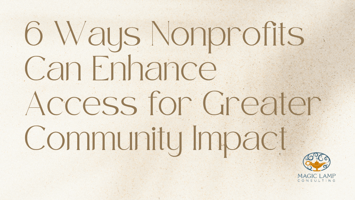Building Stronger Coalitions: Why Collaboration Is Key to Combating Food Insecurity Now

Across communities nationwide, nonprofits are working tirelessly to address food insecurity — an issue that continues to grow as families face rising costs, limited access to healthy food, and gaps in support. For organizations already stretched thin, the demand for food assistance has never been higher. But one thing is clear: no single nonprofit can meet this challenge alone. To effectively tackle food insecurity, collaboration isn’t just helpful — it’s essential.
The power of coalition-building lies in its ability to unite strengths, fill gaps, and multiply impact. When organizations work together rather than in isolation, they can coordinate resources, reduce duplication, and expand their reach. In times of increased demand and limited funding, forming strong coalitions may be the most important step a nonprofit can take to ensure that no one in their community is left behind.
At its core, collaboration starts with trust. Nonprofits often serve similar populations or operate in overlapping regions, which can sometimes lead to feelings of competition — especially when grants and donations are limited. But the reality is that today’s hunger crisis demands a mindset shift from competition to cooperation. Building a coalition means seeing other organizations not as rivals, but as allies with shared goals and complementary strengths. One group may have deep relationships in a particular neighborhood, another may have robust logistics, while a third may specialize in advocacy or outreach. When these capabilities come together under a shared vision, communities benefit exponentially.
Consider the example of the Central Massachusetts Hunger Relief Network, a collaborative effort launched during the height of the COVID-19 pandemic. At that time, pantries and meal programs were overwhelmed, many struggling with supply chain disruptions and volunteer shortages. Rather than compete for limited resources, several regional nonprofits decided to form a coalition to coordinate food sourcing and distribution. Each partner brought something unique to the table: one organization offered refrigerated trucks, another shared warehouse space, and others contributed their networks of volunteers and local donors. Together, they created a unified system that served thousands more families than any of them could have reached alone. Even after the crisis subsided, the coalition continued to share data, coordinate deliveries, and advocate for policy change — proving that collaboration can create long-term transformation, not just short-term relief.
Building this kind of partnership takes intentional effort. It starts with open communication and a willingness to listen. Nonprofits can begin by convening community roundtables or virtual meetings with other local service providers to identify shared challenges and brainstorm collaborative solutions. These conversations often reveal surprising overlaps in mission and capacity. For instance, a youth-serving nonprofit might have space available during the day that a food pantry could use for pop-up distribution, or a community garden program might supply fresh produce to shelters that typically rely on canned goods.
Strong coalitions also rely on clear roles and mutual accountability. A common mistake in collaborative efforts is failing to define who is responsible for what. To avoid confusion, it helps to develop simple memorandums of understanding (MOUs) or written agreements that outline each partner’s contributions, responsibilities, and communication channels. This structure doesn’t just keep operations running smoothly — it builds trust by ensuring everyone feels valued and seen.
Technology can further enhance collaboration. Shared data systems and communication tools make it easier for organizations to coordinate in real time. For example, maintaining a shared Google Drive or CRM system for tracking food inventory and client needs can prevent overlap and ensure resources are directed where they’re most needed. Likewise, using shared social media campaigns can help amplify messages about community drives, volunteer needs, or emergency distributions. When nonprofits speak with one voice, they can inspire broader public engagement and attract new donors who appreciate the spirit of unity.
Another key element of coalition-building is collective storytelling. When organizations share their successes and struggles together, they create a more powerful narrative that captures the attention of funders, policymakers, and the public. Instead of one organization asking for support, a coalition can demonstrate widespread impact through joint reports, shared press releases, and coordinated events. This unified visibility often leads to greater funding opportunities and policy influence — both critical in addressing systemic issues like food insecurity.
Equity must also be at the heart of every coalition. Effective collaboration means ensuring that smaller, grassroots organizations have an equal seat at the table alongside larger, more established nonprofits. These smaller groups often have the closest relationships with the communities most affected by hunger and can provide invaluable insight into local needs. True coalition-building doesn’t just connect organizations — it uplifts diverse voices and ensures that every partner benefits from the collective effort.
As nonprofits continue to meet growing demand for food assistance, strengthening collaboration can provide both immediate relief and long-term resilience. By aligning missions, sharing resources, and coordinating communication, organizations can transform fragmented efforts into a united front against hunger.
Connect With Us
If your organization is ready to build stronger partnerships, streamline collaboration, or design a community-wide strategy to combat food insecurity, Magic Lamp Consulting is here to help. Our team specializes in helping nonprofits strengthen their networks, tell their stories, and create lasting impact.
Reach out today to start a conversation about how we can support your mission and help your organization shine brighter — together.




